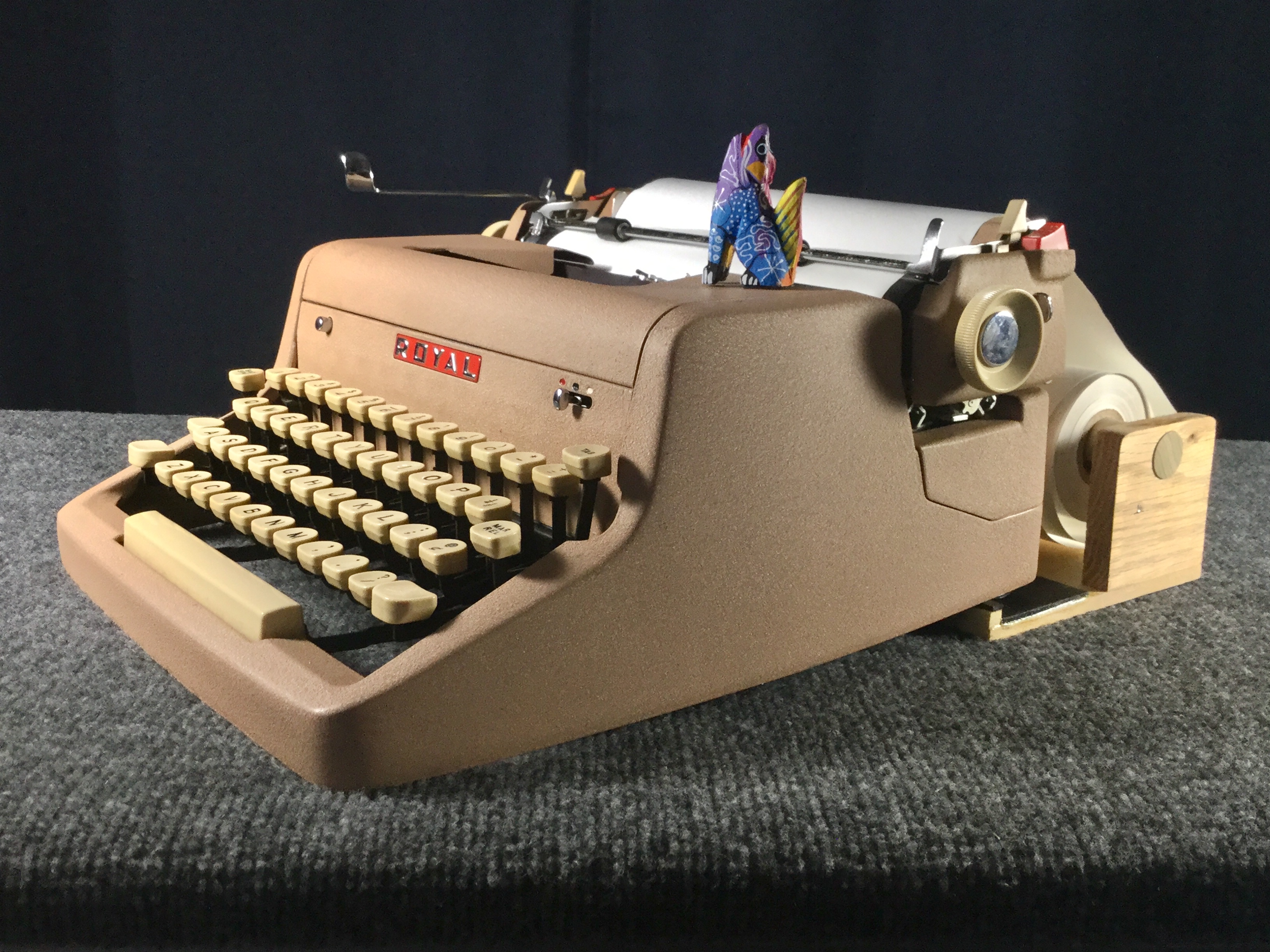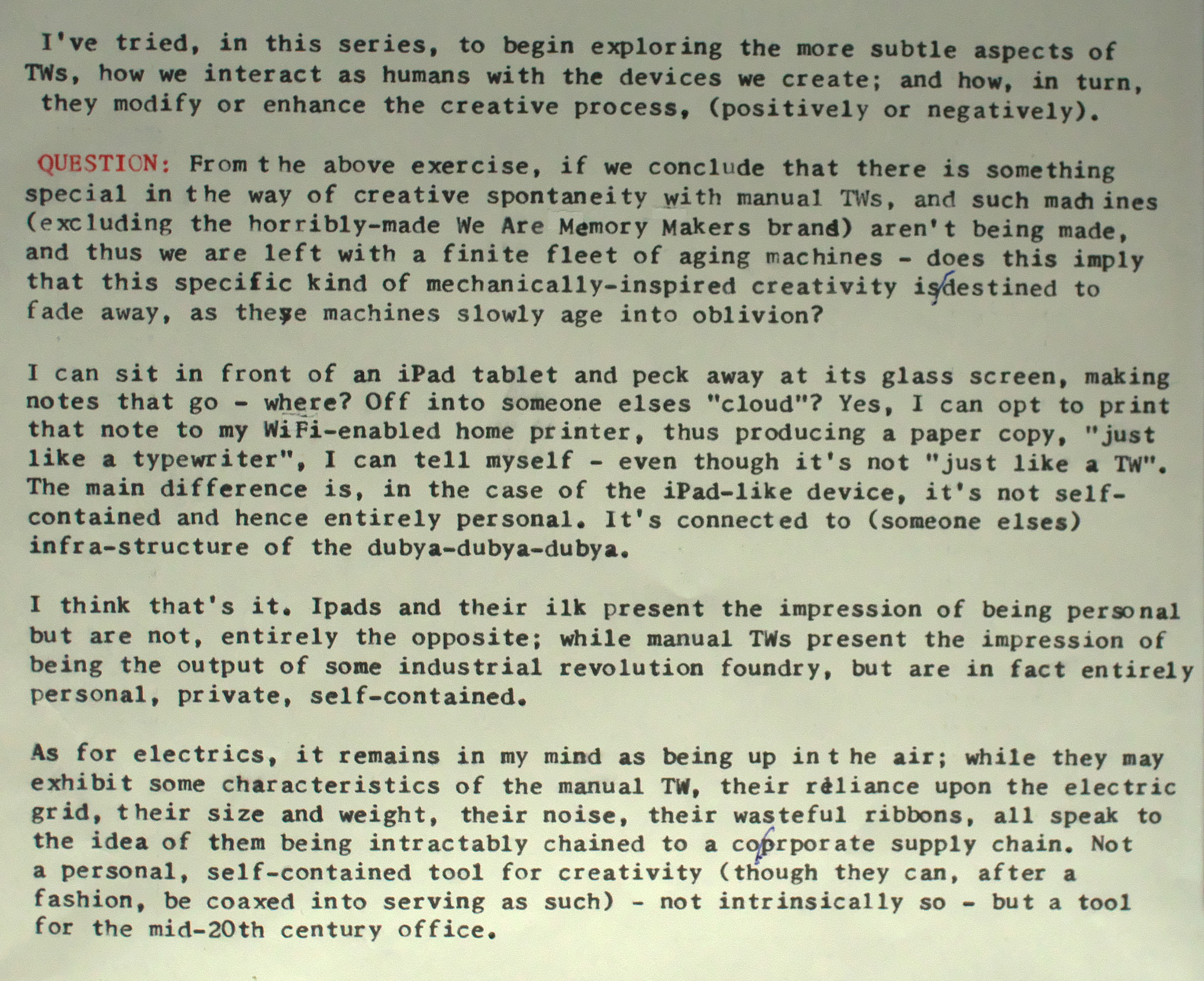Manuals, Electrics and Creativity

See that lovely creature above? No, not the fake coyote, the Royal. Her name's Adobe Rose. I sat down at her this morning and typed out some extensive notes, in preparation for a video, on the subject of creative writing with manual and electric typewriters. I used the roll of thermal fax paper and liked the results. Very dark imprint, which she seems to do easily; better than many other machines in my collection. And a rather clear imprint for being elite-sized typeface.
But these thoughts didn't start today. They were the result of a late-night typing and socializing session I spent last night with fellow typewriter nerd Kevin.
In keeping with my renewed promise to blog more often ("Captain's blog, star date 60618.2"), I'm taking these raw video production notes and throwing them out to the typosphere - warts, typos and all. You can provide your own spell checking.
Being as how the piece was from one continuous roll, I've taken the liberty to divide it into three parts. Afterwards, you'll find a link (malicious advertising) to the resulting video. Enjoy.



Labels: Adobe Rose, creative writing, IBM Selectric, Remington Quiet-Riter, Rooy, thermal paper, Typewriter video series, typing scrolls, Typosphere

2 Comments:
I find the wedges with the pin printer heads interesting although I no longer have any in my collection. Next best thing to a Selectric. My preference for a manual is that it can be used anywhere since there is no reliance on an external energy source other than my fingers pressing the keys and my hand returning the carriage. I really like Selectrics, but I do not have any for several reasons that do not out weigh my liking of them.
From back in the day for office productivity I guess an electric would be the best.
I've had typing sessions with others on the patio, sometimes including electrics depending on whim and comfort level considerations for my guest typist. In those cases, I always pre-setup the scene - pulling out an extension cord with multiple outlets (one for a lamp, as it's usually night typing) and setting up the machines on thick pads to dampen the hum. It can work well, but you need to do some prior staging. (:
Post a Comment
<< Home